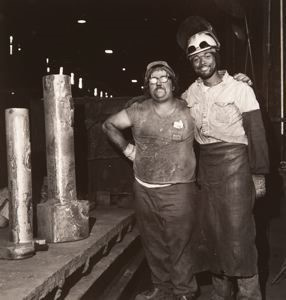Introduction
It isn’t just a question of seeing something and photographing it. I just use the camera as a way of expressing my thoughts about society.
—Milton Rogovin
Milton Rogovin (1901—2011) was proud to call himself a “social-documentary photographer.” For more than four decades, he recorded the overlooked and exploited segments of society he called “the Forgotten Ones.” Though formally trained as an optometrist, Rogovin found photography a way of making visible the underprivileged and overworked.
Distressed by the widespread poverty during the Great Depression, Rogovin attended night classes sponsored by the New York Workers School, read the Communist Party newspaper The Daily Worker, and became an advocate for social equity. Around the time Rogovin became interested in politics, documentary photography, specifically images of the effects of economic hardship on American families, had become an important form of communication and dissemination of information. Contemporaries such as Dorothea Lange and Walker Evans were documenting the consequences of the Depression through the Farm Security Administration’s (FSA) photography program. Seminal figures in the creation of social documentary photography, such as Jacob Riis and Lewis Hine, were inspirations to Rogovin. In 1957, as a consequence of his activism, Rogovin was called before the House Un-American Activities Committee, whose hearings led to the blacklisting and public persecution of many artists. A year later, he devoted himself entirely to photography: his art became the vehicle for his egalitarian ideals. Rogovin committed his photographic practice to disadvantaged people and became an important contributor to the history of social documentary photography.
Drawn from the permanent collection of the San José Museum of Art, Life and Labor presents photographs from three series—gifted to the Museum in 2011—that shed light on significant social issues of the time: the plight of miners (2011.16.06); the decline of the steel industry in upstate New York (2011.16.10); and the everyday struggles of the poor and working class in Buffalo, where he lived (2011.16.30). Rogovin’s photographs serve as historical records of the changing working-class neighborhoods and multi-ethnic communities over many decades. Photographing well into his nineties, Rogovin created powerful and provocative portraits that today still speak to the same ongoing concerns over employment and income gaps.

